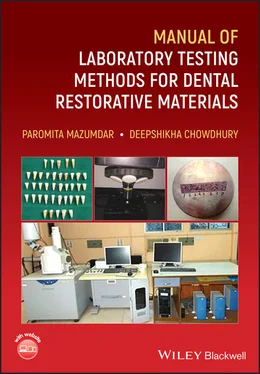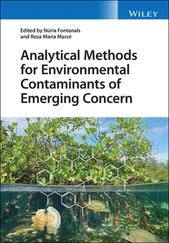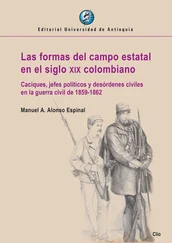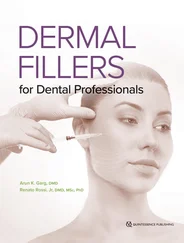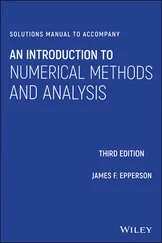1.10.1.3 Push‐Out (PO) Test
In this method, load is applied through a plunger mounted in the UTM. The plunger must provide near‐complete coverage of the testing material without touching the substrate. This method is useful to test adhesion of root canal sealers and retention of posts luted in root canals [17].
1.10.2 Micro‐Test Methods
1.10.2.1 Micro Shear Test
Shear bond strength (SBS) testing with bonded cross‐sectional areas of 3 mm 2or less is referred to as “micro” SBS. It permits efficient screening of adhesive systems, regional and depth profiling of a variety of substrates and conservation of teeth. Micro‐shear tests remain an extremely useful test for those substrates with properties such as glass ionomers or enamel that make them particularly susceptible to the specimen preparation effects and testing conditions of μTBS testing [18] .
1.10.2.2 Micro Tensile Test
Micro‐tensile bond test (μTBS) allowed additional research designs that the “macro” tests did not, such as the elimination of tooth dependency through balanced designs. However, there is a difficulty in measuring bond strengths lower than 5 MPa [19].
1.10.2.3 Micro Push‐Out Bond Strength
Micro‐push‐out test is a modification of push‐out test where the specimen thickness is less than or equal to 1 mm 2[15] .
1 Tensile strength, diametral compression test, compressive strength, flexural strength, resistance to fatigue, hardness, elastic modulus, fracture toughness are the various mechanical properties that are measured in the field of dental material sciences.
2 Universal Testing Machine (UTM) is used for most of the tests with the only difference being that the sample preparations differ for each test. Hardness testing depends upon the material to be tested.
3 The samples are prepared as per ISO standards to get optimum results. Also, the area which is subjected to the force differs due to the size of the stick/blade.
4 Axial forces in a straight line and in opposite directions result in tension in the body of a material, and the resistance of the material to this load is called tensile strength. Nominal value of tensile strength is determined by the equation of load and cross‐sectional area (Kgf/cm2).
5 The diametral tensile strength (DTS) test is useful for materials where information regarding stretching or elongation resistance is required and the failure has to occur along the center of the specimen.
6 Compressive strength is used to test materials which are subjected to occlusally directed forces in the oral cavity.
7 Flexural forces are the forces that generate repeated flexing, bending and twisting of the materials.
8 Resistance to fatigue is the measurement of a fatigue limit, with no fracture, at a given number stress cycles.
9 Hardness of a material gives an indication of the resistance to penetration when indented by a hard asperity.
10 Types of hardness: macro hardness and micro hardness.
11 Macro hardness has force application greater than 50 N, and micro hardness has force application less than 10 N. Macro hardness test is done using Vickers, Rockwell and Brinell hardness tester, whereas micro hardness test is done using Vickers and Knoop hardness tester.
1 1 Albers, H.F. (1996). Tooth‐Colored Restoratives, 8e. Santa Rosa: Alto Books.
2 2 Craig, R.G. (1997). Mechanical Properties. Restorative Dental Materials, 10e, 56–103. St. Louis: Mosby.
3 3 Craig, R.G. (1997). Optical, Thermal, and Electrical Properties. Restorative Dental Materials, 10e, 30–55. St. Louis: Mosby.
4 4 Vieira, D.F. (1965). Propriedades mecânicas. Propriedades dos materiais odontológicos, 31–89. São Paulo, Universidade de São Paulo.
5 5 Vieira, D.F. (1965). Propriedades ou constantes físicas. Propriedades dos materiais odontológicos, 92–105. São Paulo: Universidade de São Paulo.
6 6 Wang, L., Henrique, P., Gonzaga, L., and Carlos, J. (2003). Mechanical properties of dental restorative materials: relative contribution of laboratory tests. J. Appl. Oral Sci. 11 (3): 162–167.
7 7 Darvell, B.W. (2000). Mechanical testing. Materials science for Denstistry, 6e, 1–34. Hong Kong: University of Hong Kong.
8 8 Sood, A., Ramarao, S., and Carounanidy, U. (2015). Influence of different crosshead speeds on diametral tensile strength of a methacrylate based resin composite: An in‐vitro study. J. Conserv. Dent. 18: 214. https://doi.org/10.4103/0972‐0707.
9 9 Cefaly, D.F.G., Franco, E.B., Mondelli, R.F.L. et al. (2003). Resistência à tração diametral e sorção de água de cimentos de ionômero de vidro usados no Tratamento Restaurador Atraumático. J. Appl. Oral Sci. 11 (2): 96–101. https://doi.org/10.1590/S1678‐77572003000200003.
10 10 Cattani‐Lorente, M.A. (1999). Comparative study of the physical properties of a polyacid‐modified composite resin and a resin‐modified glass ionomer cement. Dent. Mater. 15: 21–32.
11 11 International Organization for Standardization (1993). Technical report ISO 9917. Switzerland: Dental water‐based cements.
12 12 Anusavice, K.J. (1993). Recent developments in restorative dental ceramics. J. Am. Dent. Assoc. 24: 73–84.
13 13 Anusavice, K.J. (1983). Propriedades mecânicas dos materiais dentários. Phillips materiais dentários, 10e, 28–43. Rio de Janeiro: Guanabara Koogan.
14 14 International Organization for standardization (1998). Technical report ISO 9917‐2 Dental water‐based cements‐ Part 2. Switzerland: Light‐activated cements.
15 15 Castellan, C.S., Santos‐Filho, P.C., Soares, P.V. et al. (2010). Measuring bond strength between fiber post and root dentin: a comparison of different tests. J. Adhes. Dent. 12: 477–485.
16 16 De Munck, J., Mine, A., Poitevin, A. et al. (2010). Testing bond strength. A review of the literature. Dent. Mater. 26: e139–e140.
17 17 Jainaen, A., Palamara, J.E., and Messer, H.H. (2007). Push‐out bond strengths of the dentine – sealer interface with and without a main cone. Int. Endod. J. 40: 882–890.
18 18 Armstrong, S., Geraldeli, S., Maia, R. et al. (2010). Adhesion to tooth structure: a critical review of “micro” bond strength test methods. Dent. Mater. 26: e50–e62.
19 19 Pashley, D.H., Carvalho, R.M., Sano, H. et al. (1999). The microtensile bond test: a review. J. Adhes. Dent. 1: 299–309.
Конец ознакомительного фрагмента.
Текст предоставлен ООО «ЛитРес».
Прочитайте эту книгу целиком, купив полную легальную версию на ЛитРес.
Безопасно оплатить книгу можно банковской картой Visa, MasterCard, Maestro, со счета мобильного телефона, с платежного терминала, в салоне МТС или Связной, через PayPal, WebMoney, Яндекс.Деньги, QIWI Кошелек, бонусными картами или другим удобным Вам способом.
